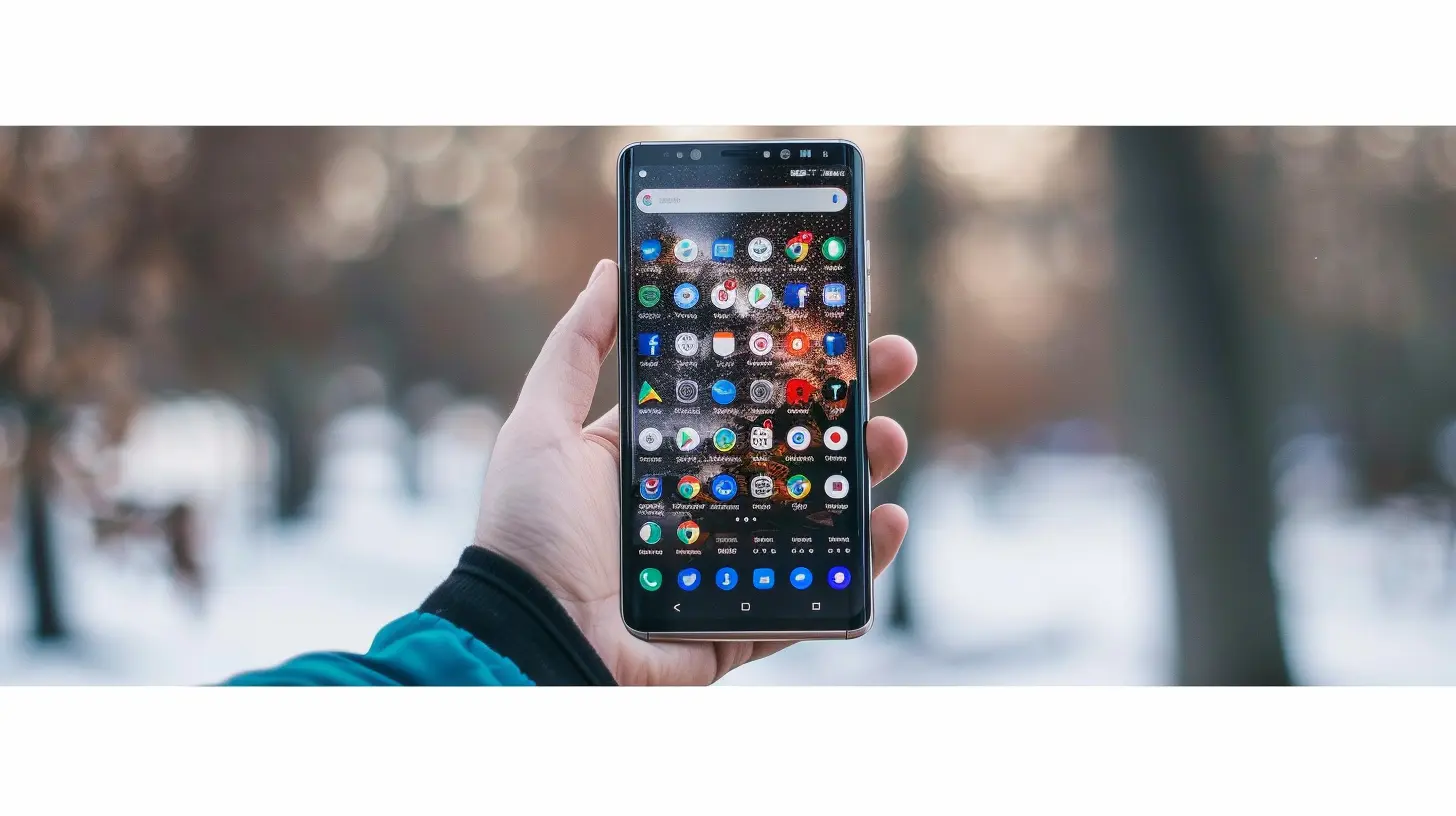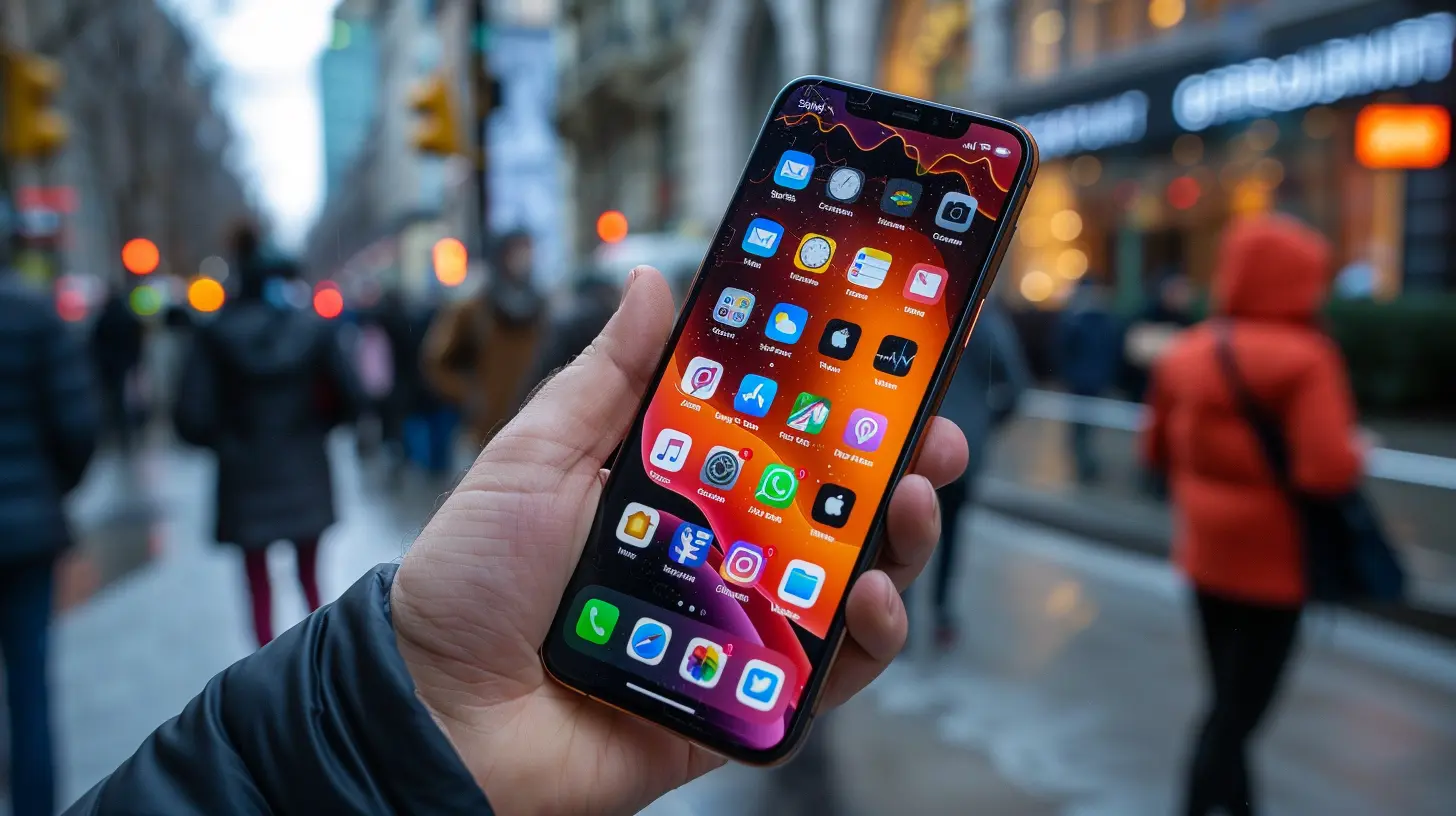16 April 2025
Mobile screen technology has come a long way from the bulky, low-resolution displays of the early days. Today, smartphones boast stunning visuals, buttery-smooth refresh rates, and even futuristic foldable designs. It’s a game-changer. But what are the latest innovations shaping the way we interact with our screens? Let’s dive deep into the future of mobile displays and uncover the tech that’s making waves.

The Rise of OLED and Micro-LED Screens
OLED: The Gold Standard for Displays
For years, OLED (Organic Light-Emitting Diode) screens have been the dominant force in premium smartphones. Unlike traditional LCDs, which require a backlight, OLED panels light up individual pixels. The result? Deeper blacks, vibrant colors, and better power efficiency.But OLED isn’t standing still. Manufacturers are refining it by introducing LTPO (Low-Temperature Polycrystalline Oxide) OLED screens. These displays dynamically adjust refresh rates, reducing power consumption and extending battery life—something every smartphone user can appreciate.
Micro-LED: The Next Big Thing?
Micro-LED, on the other hand, is an up-and-coming contender. These displays promise better brightness, longer lifespan, and no risk of burn-in (a common OLED issue). Unlike OLEDs, which degrade over time, Micro-LED screens are made of inorganic materials, making them more durable.The catch? They’re still expensive to manufacture. But as technology progresses, Micro-LEDs could replace OLED as the new king of mobile displays.

High Refresh Rates: Smoother Than Ever
Remember the days when 60Hz was the standard? Those days are gone! Today, smartphone screens are pushing the boundaries with 120Hz, 144Hz, and even 165Hz refresh rates.A higher refresh rate means smoother scrolling, snappier animations, and an enhanced gaming experience. Gamers especially love this, as it can make all the difference in fast-paced titles. But it’s not just for gaming—once you experience a high-refresh-rate phone, there’s no going back.

Adaptive Refresh Rates: Saving Battery Without Compromise
While high refresh rates are great, they can be battery killers. That’s where adaptive refresh rate technology comes in.Modern smartphones can now adjust their refresh rate dynamically depending on what’s happening on the screen. If you’re reading a static article, the display may drop to 10Hz or even 1Hz, significantly reducing power consumption. If you start scrolling, it instantly jumps back up for smooth performance.
This innovation combines the best of both worlds: seamless visuals and improved battery life.

The Evolution of Foldable and Rollable Displays
One of the most exciting advancements in screen technology is the rise of foldable and rollable displays. It’s like something straight out of a sci-fi movie!Foldable Screens: From Gimmick to Mainstream
A few years ago, foldable phones felt like an expensive gimmick. But fast forward to today, and they’re quickly gaining traction. Brands like Samsung, Google, and Huawei have refined their foldable designs, offering more durable hinges, crease-free displays, and better multitasking features.Foldables allow for a compact phone that unfolds into a tablet, giving users the best of both worlds. Whether it's for productivity or entertainment, having a larger screen on demand is a game-changer.
Rollable Displays: A New Frontier
While foldable phones are here, rollable displays are just beginning to make an appearance. Instead of folding, these screens expand and retract smoothly, eliminating creases and offering an even more futuristic experience.Companies like LG and Oppo have showcased rollable phone prototypes, and while they aren’t mainstream yet, they could be the next evolution in smartphone form factors.
Under-Display Cameras: The Future of Truly Bezel-Less Phones
Gone are the days of notches and punch-hole cameras ruining an otherwise flawless display. The latest innovation? Under-display cameras (UDCs).These cameras sit beneath the screen, becoming invisible when not in use. This allows for a truly immersive edge-to-edge display. While early iterations struggled with image quality, new advancements in AI processing and better panel transparency are making UDCs a viable option for flagship devices.
Eye Comfort and Health-Focused Display Technology
Screen time is at an all-time high, and prolonged exposure to blue light can cause eye strain and sleep disruption. That’s why smartphone makers are introducing technologies to ease eye fatigue.Blue Light Reduction and Vision Protection
Many modern displays come with hardware-based blue light filtering, which reduces exposure without distorting colors like traditional software filters. Some phones even have dedicated eye comfort modes that dynamically adjust the screen’s color temperature based on the time of day.PWM Dimming vs. DC Dimming
Ever noticed flickering when viewing your phone screen at low brightness? That’s PWM (Pulse Width Modulation) dimming in action. While it helps conserve power, it can cause discomfort for sensitive users. Thankfully, many manufacturers now offer DC dimming as a flicker-free alternative, reducing eye strain for those who spend hours staring at their phones.Haptic Feedback and Tactile Innovations
Screens are becoming more than just visual interfaces—they’re also enhancing touch interactions.Advanced haptic feedback now mimics real-world textures and button-like sensations. This technology, powered by improved vibration motors, makes typing, gaming, and navigating menus feel much more immersive.
Companies like Apple and Sony are pushing the boundaries with ultra-precise haptic engines, making touchscreen interactions feel almost physical. Imagine feeling the roughness of sand or the click of a button just by touching your screen—this is where mobile displays are headed.
Energy-Efficient and Eco-Friendly Displays
As concerns about e-waste and environmental impact grow, smartphone manufacturers are working on sustainable display technologies.Eco-Friendly Manufacturing
Newer screens use low-power materials and energy-efficient manufacturing processes to reduce their carbon footprint. Some brands are even experimenting with recyclable OLED panels, reducing electronic waste.Solar-Powered Displays?
Imagine charging your phone just by placing it under the sun. Researchers are working on displays that integrate solar-harvesting materials, allowing them to convert light into energy. While this tech is still experimental, it could revolutionize battery life in the future.What’s Next for Mobile Screens?
From OLED to Micro-LED, foldables to rollables, and under-display cameras—mobile screen technology is advancing at breakneck speed. Every year, we’re seeing designs that were once considered impossible become a reality.The future promises even more innovations: holographic displays, AI-powered adaptive screens, and even self-healing panels that can repair minor scratches on their own. It’s an exciting time to be a tech enthusiast!
One thing's for sure—our interactions with smartphones are evolving, and the screens in our pockets are about to become smarter, more efficient, and more immersive than ever before.


